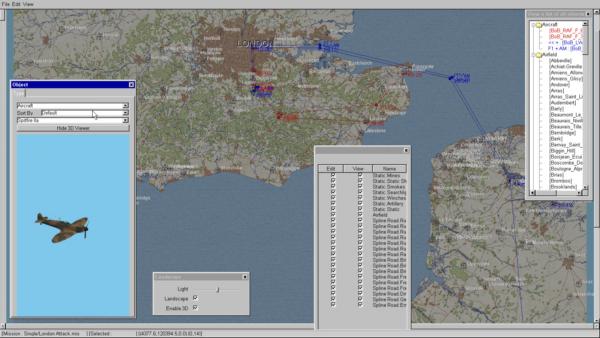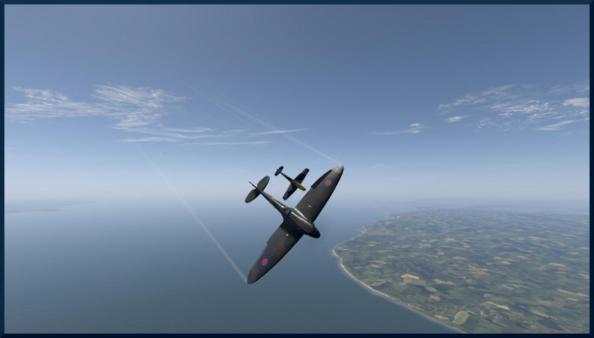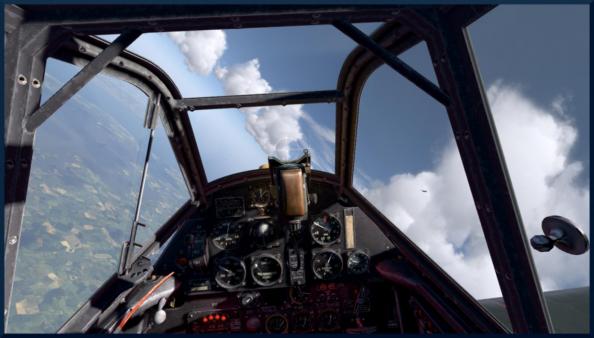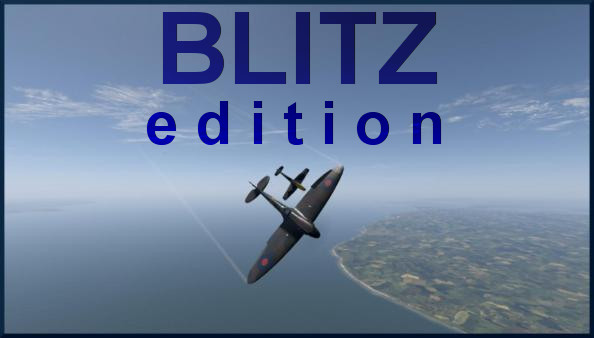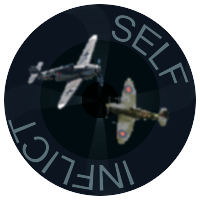FliersHaveMerit
Fliers have merit, those meritorious fly, those who don't fly have no merit!
IL- 2 Sturmovik: Cliffs of Dover
 Since the moment of cessation of support for Windows 7 and the Microsoft Security Essentials anti viral package with it is drawing near, the author of this web site decided to install the AVAST Free Anti- virus as a permanent solution. Sadly, AVAST recognizes the executable of the IL- 2: Cliffs of Dover- Blitz as a generic virus and quarantines it. It is only natural that this will cause concern with users who don't own a separate computer dedicated exclusively to simulating flight, on which sensitive data isn't kept. However, there's hope for those who don't want to get the creeps every time they enjoy their favorite flight simulator.
Since the moment of cessation of support for Windows 7 and the Microsoft Security Essentials anti viral package with it is drawing near, the author of this web site decided to install the AVAST Free Anti- virus as a permanent solution. Sadly, AVAST recognizes the executable of the IL- 2: Cliffs of Dover- Blitz as a generic virus and quarantines it. It is only natural that this will cause concern with users who don't own a separate computer dedicated exclusively to simulating flight, on which sensitive data isn't kept. However, there's hope for those who don't want to get the creeps every time they enjoy their favorite flight simulator.The IL- 2 Sturmovik simulator, even in it's latest incarnation IL- 2 Sturmovik: 1946, doesn't have either a map of Britain or models of older fighters that flew during the Battle of Britain. Off course, some mods provided even this, but the shortcoming indicated an intention of the development team which, after all, wasn't even concealed, to produce a simulator dedicated exclusively to the Battle of Britain. Initially, the plan was to use the graphics engine and the advanced flight model already built for IL- 2 sturmovik: 1946, while the elements brought by the mods were supposed to be new: model of the terrain of Britain and a relevant portion of France as well as models of aeroplanes. In the meantime PC hardware became more capable, clickable cockpit models more detailed than those available in the IL- 2 Sturmovik: 1946 simulator were slowly becoming the norm, while Direct X 10 and 11 enabled creating more beautiful and detailed graphical display than the one provided by OpenGL in the older sim. The decision was made to build a new graphics engine, to provide the new simulator with a dynamic atmosphere model, to model the prop- wash and every other detail that was found lacking by the simmers while flying the IL- 2 Sturmovik: 1946. Sadly, deadlines set for the development team didn't allow for the simulator to be perfected before it was published, which made the simmers who purchased it a little disappointed by the half- bakedness of what was supposed to achieve everything they ever wanted to see achieved in a flight sim. Until the last official patch was published through Steam, through which this simulator is being distributed, the project was managed by Ilya Shevchenko, creditable for a large part for the high quality of the IL- 2 Sturmovik: 1946 simulator. Ilya, pressured by deadlines and the absence of key members of the team, achieved the correction of most deficiencies as well as an increase in frame rates after which a cessation of official development ensued. A group of enthusiasts that styled themselves Team Fusion continued unofficial work on IL- 2 Sturmovik: Cliffs of Dover and provided flight model corrections, new effects that increase frame rates even more, new models of flyable aeroplanes, new cockpits, a dynamic campaign of sorts and a few other things for this simulator.
IL- 2 Sturmovik: Cliffs of Dover- full mission builder user interface
IL- 2 Sturmovik: Cliffs of Dover, in it's basic version, contains single missions and scripted campaigns for both sides that took part in the conflict. Scripted campaigns are relatively short and, while the RAF campaign attempts to depict interpersonal relationships in squadrons and even dedicates one mission to romance, Luftwaffe campaign sheds light on historical circumstances. The "Quick mission" concept is different when compared to the similar concept in IL- 2 Sturmovik: 1946 simulator and, in it's essence, represents several built missions for which the user can set certain conditions and pick a side to fly for. A mission builder which doesn't fall behind the mission builder in the older simulator is put at the user's disposal, but the impression that this segment reveals how pressed for time the development team was to bring this simulator to perfection can't be avoided. While online flying is always found good enough when a full mission builder is available, experience of the users who don't connect to the Internet remains a little short- lived and empty, but one can resort to downloading third- party scripted campaigns in an effort to overcome this shortcoming.
Out of several projects aimed at developing a dynamic campaign for this simulator, the offline pilot has the dynamic campaign built by a person nicknamed The Enlightened florist at one's disposal , which is included into the content of the latest Team Fusion patch. At the start of the campaign it's possible to set the dates at which the campaign starts and ends, the number and type of aeroplanes flying for each of the sides as well as the AI skill level. The user will be presented with the number of targets destroyed after every mission, but one shouldn't hope for promotions because this dynamic campaign doesn't care about pilot's career, but provides one with exciting and always different missions to fly instead.
IL- 2 Sturmovik: Cliffs of Dover- the outside world
Among the main reasons for the long development of this simulator, if not the main reason, is the strive to develop a new graphics engine which was meant to take advantage of new possibilities of DirectX 10 graphic libraries and provide a graphical display that, thanking to it's quality, wouldn't fall behind the competition for a long time to come. This was also the case with the IL- 2 sturmovik simulator, and the plan was for Cliffs of Dover to receive many expansions as well. Publishing this simulator before it was finished and the cessation of official development dispelled hopes of enthusiasts related to expansion packs in the form of new maps and aeroplanes and abandoned them to what Team Fusion could produce, and this is far from dissapointing. The high standard which was gravitated to was, one can state with no exaggeration, achieved. While taxiing one can see the grass drawn on the ground, settlements are densely populated by building models, and to add to the reflections on water surfaces enthusiasts got used to in the old simulator, there's a new method of displaying forests by using the SpeedTree technology which provides for model of every tree in a forest to be drawn separately. However, processing power doesn't currently allow detecting collision of simulated aeroplanes with trees and, as a result, one can fly through forests with no ill consequences. While flying at higher altitudes, on the other hand, this matter loses relevance. The terrain looks photo realistic and it's probably not an exaggeration to assume that Oleg Maddox succeeded in presenting the users with a true picture of World War II period Britain including Cliffs of Dover mentioned in the title, Big Ben, the Tower of London and everything else one could expect to see in Britain. Things are, off course, no different with regard to France. After publishing, certain problems existed related to aeroplanes disappearing at around 600 meters of distance and, to add to that, as means of increasing frame rate one of the official patches made dots that represent aeroplanes at greater distances visible through clouds. Both problems were remedied by Team Fusion add ons while increasing frame rate at the same time by providing new, less demanding effects and clouds at the price of a negligible loss in image quality. The dynamic atmosphere model represents another innovation, still relatively rare in the world of PC flight simulators, which brings changes of athmospheric conditions as time flows.
IL- 2 Sturmovik: Cliffs of Dover- flying
It's not unusual for a discussion regarding a flight simulator's flight model fidelity to start when a simulator, modelling older aeroplanes for which flight characteristics are known, is published. This was the case with the IL- 2: Sturmovik simulator and Cliffs of Dover is no exception. After the simulator was published, critique was perceived on the Internet regarding sustained performance modelling, first and foremost regarding high altitude flight. This problem was remedied to a certain degree by official patches and Team Fusion continued working on flight models in order to accord sustained performance of simulated aeroplanes with sustained performance charts dating back to the time when these aeroplanes were used operationally. Goals were set high concerning the flight model as well, and Cliffs of Dover leaves a pretty good impression in this regard. Currently, the user has an advanced flight model at one's disposal which provides for applying real life air combat tactics, which represents quite a rigorous test when flight modelling is in question, and furthermore, a number of aerobatic maneuvers the simmer may wish to perform will look true to life. Since, in most cases, control devices available off the shelf are used with PC flight simulators, lacking dimensions , force and deflection angles of their real life counterparts, response curves in the sim can be adjusted in an effort to remove the effects caused by the aforementioned differences, and corrections made to stability and control derivatives introduced by Team Fusion apear to have helped with this. Same team corrected ground handling and wheel brake models and, the expectation may not be unrealistic, there will be further improvements.
Since piston engines are the only type of engine present on simulated aeroplanes, and in accordance with the goals set while the simulator was in development, engine models on different types are very detailed. One can perceive the difference between the variable pitch propellers and constant speed propellers coupled with Merlin engines on British fighters as well as the difference between the functioning of DB- 601 engines which are not equipped with the Komandogerrat device on German fighters Bf- 109 E1 and E3 and the Bf- 109 E4 fighter which comes equipped with this device. The automatic boost control is modelled on British fighters. This device can be switched off in order to get more power out of the engine, but with running the risk of damaging it. Team Fusion, in addition to other corrections of the engine model, added a few aeroplane model variants which differ from those that were present, first and foremost, in the usage of 100 octane fuel with regard to British fighters, and a war emergency power device modelled for the German Bf- 109 E4N fighter. Gyroscopic and torque moments, especially important while modelling the spin, depend on engine RPM and propeller spinning direction, and the simmer will feel their influence under certain conditions and find oneself compelled to compensate with aerodynamic controls. Influence of prop wash on an aeroplane that flies through it was present when the simulator was published, but it was switched off in order to save up on processor cycles.
Damage model is elaborate with regard to individual system failures and the influence damage has on flight characteristics as well as with regard to displaying the damage graphically. Holes in the wings or in the fuselage, as well as detaching of ailerons, elevators, complete vertical stabiliser or the wing represent just several among many effects simmers were well used to back when IL- 2 Sturmovik was setting the standards in damage modelling. IL- 2 Sturmovik: Cliffs of Dover adds a more elaborate engine damage model, thanking to it's more elaborate engine model first and foremost, while the odd simmer will be able to perceive pieces of skin or the engine cowling falling off an aeroplane exposed to gunfire, or the landing gear being lowered as a consequence of damage suffered by it's retraction mechanism. Someone may find a reason to wonder whether things have been modelled truly to the last detail: a Hurricane from which a segment of the wing containing the aileron detached, for instance, which is a bit less than a quarter of the wigspan, will remain flyable provided that the appropriate corrections are made by the rudder and the remaining aileron under certain conditions. The author of this article can not presume to know whether this was the case in real life though it is well known that an Israeli F- 15 landed with only one wing, but on the opther hand, for the sake of keeping things in perspective, one should bear in mind that the IL- 2 Sturmovik simulator, since the moment it was published, underwent many corrections for it's damage model to become what it is today. IL- 2 Sturmovik: 1946 also has structural failures induced by excessive G- load modelled which isn't yet the case with IL- 2 Cliffs of Dover.
IL- 2 Sturmovik: Cliffs of dover- clickable cockpit
Cockpit models of all flyable aeroplanes are so detailed that they look photo realistic. Team Fusion provided a few additional clickable cockpits and head tracking with six degrees of freedom is supported. Although every switch in the cockpits isn't clickable, it's possible to start up the engine, take off and fly according to the flight manual for the appropriate aeroplane type, and it's possible to find these manuals because they haven't been classified top secret for a long while. Directional indicator destabilization while pulling non- sustained maneuvers in British fighters, auxiliary pneumatic landing gear retracting system, flap control wheel in the Messerschmidt which will, with anthropomorphic commands switched on (a realism option selectable from the options menu) use up a hand of the simulated pilot, which means that the possibility of using the controls on the left- hand side of the cockpit will be limited, and other features all represent details which separate simulated aeroplane types and let the simmer perceive the differences between flying different types.
The absence of radio control models in virtual cockpits and the lack of position or landing lights on some simulated aeroplanes, as well as the fact that the menu that facilitates communication with AI entities which is accessed by keyboard is left poorer in options when compared to the corresponding menu in the IL- 2 Sturmovik: 1946 simulator, for one more time betray premature publishing of this simulator. On the other hand, the outside world graphical display quality, as well as that of cockpits and aeroplanes, high quality of aeroplane systems and flight modelling all attest to high goals the development team set for themselves and, where cicumstances allowed, achieved. Team Fusion continued the work and made even control of some ground vehicles possible. Those interested can download the necessary addons here.
Related to this simulator:
If You are ready to get pumped visit totally sweet mammels, or the following website.

